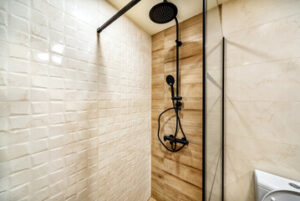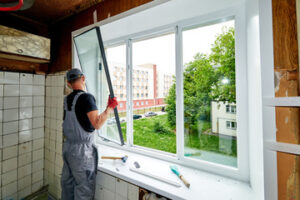The mirror is central to our history as humans. It is found in art, archaeology, medicine, psychology, philosophy, science, and technology. It is also a part of our identity, allowing us to see ourselves and compare ourselves to others.

Class activation maps and pixel intensity reveal systematic differences between Atlanta Glass And Mirror images from the ‘random’ set.
When light hits the surface of glass, it bounces off and reflects back to our eyes. This is because glass is smooth and reflective. Glass is also a good conductor of heat, which makes it a useful material for window frames. Glass can also be etched to produce patterns and textures, which adds a decorative touch to any room. It can also be coloured to create a desired effect.
The most common type of mirror is made from a silver coating on a piece of glass. However, it is possible to make a mirror with a different metal or even from plastic. These are more expensive than a standard mirror but can be used for decorative purposes. They are also more durable.
While it may seem like mirrors are reflective all the time, they only reflect light that is directly incident on them. If the light is reflected off another object or surface, it will not be able to pass through the glass. It is for this reason that you need to look at a mirror at just the right angle in order to see its true reflection.
A mirror can be fashioned from any material that is transparent to the visible spectrum and has a sufficiently smooth surface to reflect light. It must be free of any scratches, dents or pits. It is also important that the surface of the glass is smoky and free of dust or dirt. These contaminants can cause distortions in the image that will affect the ability of the mirror to reflect light at a straight angle.
In a laboratory experiment, we asked 10 observers to rate 265 images, half of which were mirrors and the other half were glass. The ratings were based on whether the subject appeared to be a mirror or glass, or both. The diagnostic set of images that ten out of ten observers misperceived as mirror or glass was selected by selecting those in the outermost bins for each condition.
The images were matched in pairs by object, illumination and camera position. This was done to avoid the classifiers simply learning a pixel difference between mirror and glass images.
Material
When a mirror is used to reflect light into a room, it brightens the space and can make it look bigger. There are many different styles of mirrors available in a variety of shapes, sizes and designs. These mirrors can be used in many different settings, from home decoration to commercial applications.
Glass is a natural choice for making mirrors because it is cheap, rigid, and transparent. Its surface can be polished to a high level of precision, which makes it very reflective. It is also easy to cut and shape, and it can be made into curved surfaces. Glass is also resistant to corrosion and scratches, making it ideal for use in a bathroom.
Mirrors are usually coated with a metal, such as silver, aluminum or gold, to give them their reflective properties. The glass is shaped and polished into its final form before being coated. The coating is applied in an evaporator, which uses a vacuum to draw the metal off of a crucible and onto the glass. The resulting coating is thin, and it reflects almost all of the visible light that hits it.
Silvered glass mirrors have been in use for centuries, but modern production is based on wet chemical deposition. A silvery layer of silver nitrate is first deposited on the glass, and then a chemical reduction process is used to convert it to metallic silver. The glass is then cleaned, polished and coated with tin chloride to prevent the silver from tarnishing. It is then acid washed and heat treated to make it durable.
Optical finishing is the final step in the production of mirrors. The finished mirror is polished to a highly precise figure, and it is mounted in a plastic or metal frame. This prevents the mirror from being damaged by sharp objects or air particles. Alternatively, it can be coated with a dielectric coating that reflects all of the visible light and transmits infrared.
Mirrors are typically made of glass because metal is too expensive to use in large quantities. It is possible to create a mirror from any polished metal, but glass provides an attractive, rigid and affordable substrate. Its surface can be etched to create a more reflective finish, and the edges of the mirror can be protected by a layer of nickel or other material.
Design
Whether you’re building your glass and mirror business from scratch, or are looking to boost your existing operations, identifying your niche can make a huge difference. Carving out a niche can allow you to attract a more targeted audience and build a loyal client base. It may also help you stand out from the competition by showcasing your expertise in specific fields of design.
To succeed in the glass and mirror industry, you must prioritize customer satisfaction and establish strong relationships with customers and suppliers. This is especially important when dealing with fragile products. Investing in superior cutting tools, edging machines, and safety equipment will ensure flawless results and reduce waste. It is also a good idea to maintain a diverse network of suppliers to safeguard against potential disruptions in the supply chain.
The etching process is an ideal way to add a decorative touch to any glass and mirror product. It is often used in furniture, cabinets, or decorative surfaces, and can add a modern twist to any space. This process can also be used to highlight certain aspects of a room, such as natural light or an architectural feature. The etched surface of the glass creates an artistic, illuminating finish, and is perfect for those who want to add a unique touch to their home.
Glass and mirror are versatile construction materials, but they also require time and precision to produce. This leads to their higher price points than other types of products. However, if you understand how to use these materials, you can create stunning and functional products for your clients.
One way to make your glass and mirror business stand out is by showcasing your work through social media. Posting before-and-after pictures of your clients’ spaces can increase engagement and boost your visibility in the industry. Additionally, networking at local events within the construction and interior design industries can open doors to collaboration opportunities. Finally, promoting your services through a visually striking website and engaging marketing materials will help you attract customers and expand your reach.
Cost
Mirrors are not cheap, but they can be an important part of your home’s design. They can be a stylish and functional addition to any room, from the bedroom to the bathroom. The cost of a mirror depends on the size and design, as well as the installation costs. Larger mirrors are more expensive than smaller ones, but you can find a variety of sizes at home improvement stores. You can also get a custom-made mirror for a specific space in your home. The frame is another factor that can affect the price of a mirror.
There are many different ways to customize a mirror, including adding bevels or polishing the edges. A beveled edge is an angular border that adds depth and visual interest. This option can also help reduce the sharpness of a frameless mirror. A 36-inch square mirror with a one-inch beveled edge can cost around $160 to $200.
Tempered glass, which is stronger than annealed glass, will increase the cost of a mirror. This is because the glass has to be tempered in a furnace that can reach temperatures up to 1200 degrees Fahrenheit. The process can also make a mirror prone to damage. This is why it is a good idea to hire a professional installer.
If you want to install a new mirror, you should first decide what type of glass and frame you want. You can also choose from a wide range of shapes and sizes. Home improvement stores stock standard-sized mirrors up to 110” x 144”, while some specialty shops can offer customized sizes.
You should be aware that there are some websites that give inaccurate price ranges for mirrors and glass. These sites are designed to attract potential buyers and generate leads for glass installation companies. You should always get multiple quotes before making a decision. Make sure to select a company that is insured, bonded, and has been in business for at least five years.
When choosing a glass and mirror supplier, ask questions about their services and warranties. A good company will be able to answer all of your questions. In addition to being licensed and insured, they should have a showroom where you can see their work and products. A reputable company will also provide a written warranty on their work.
